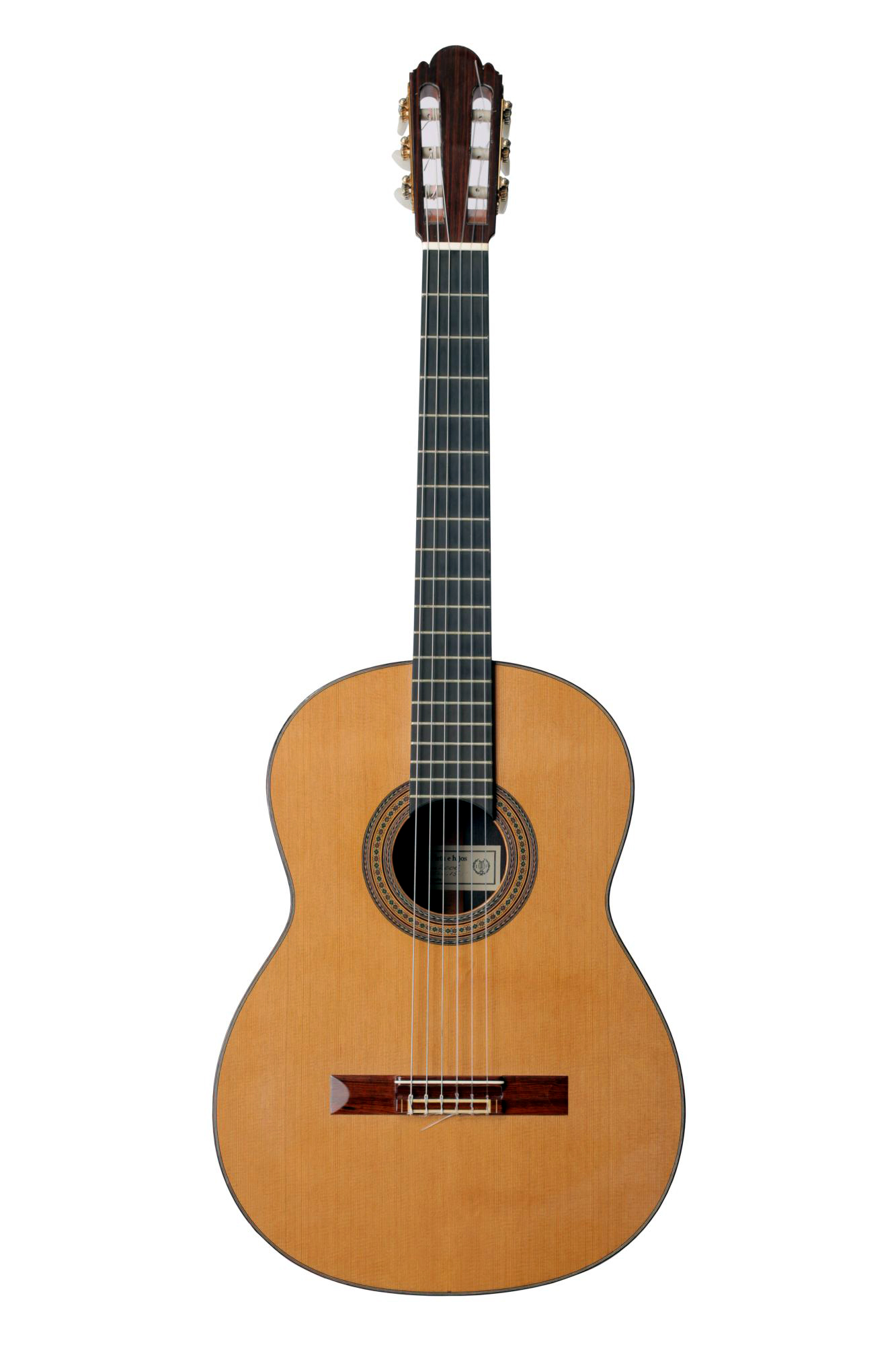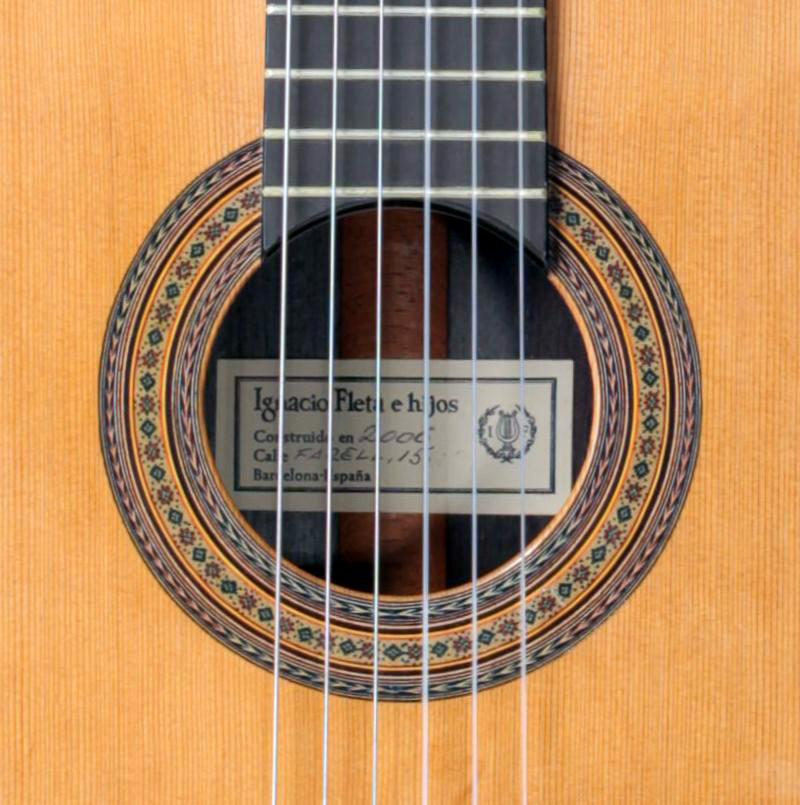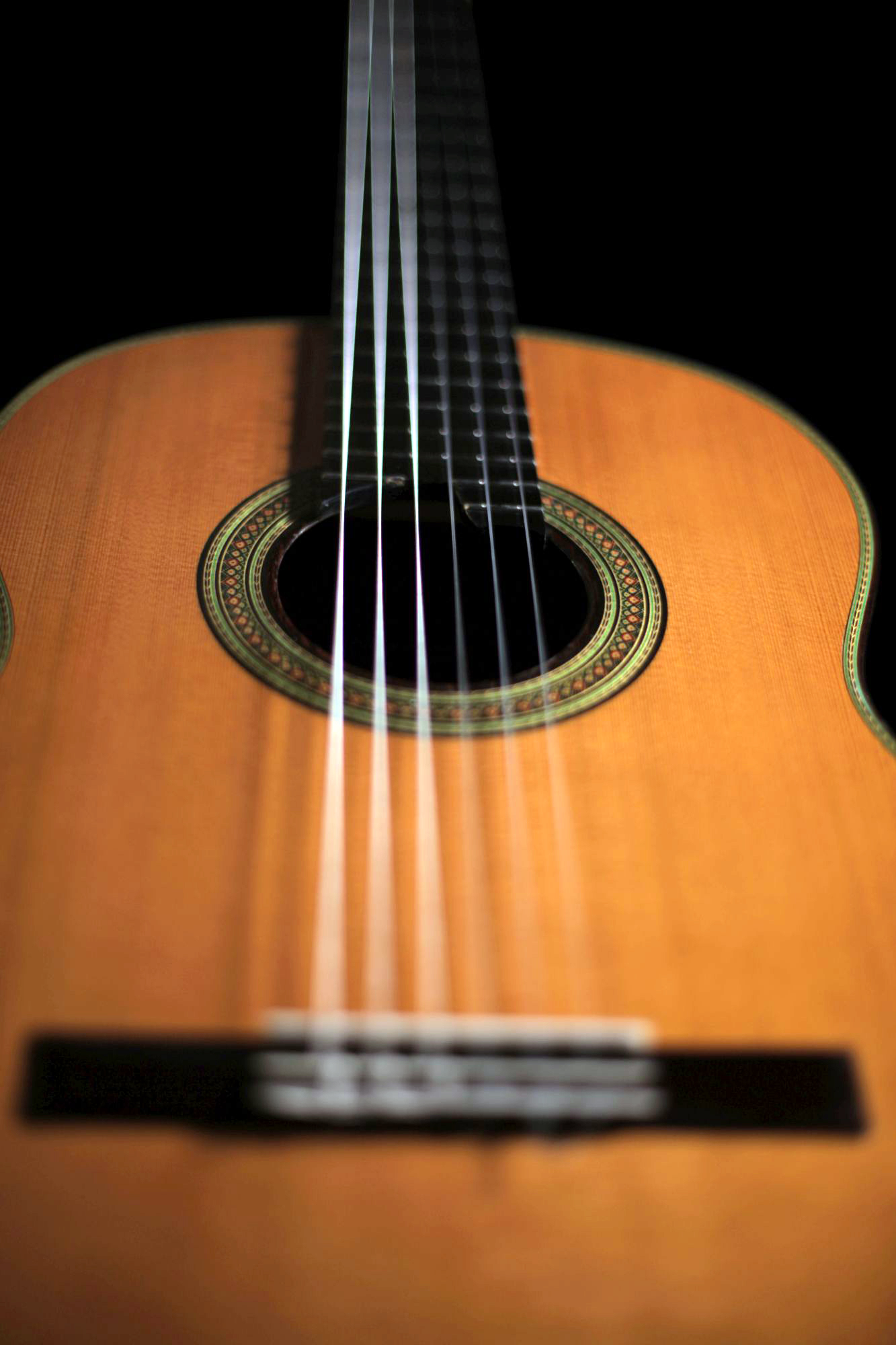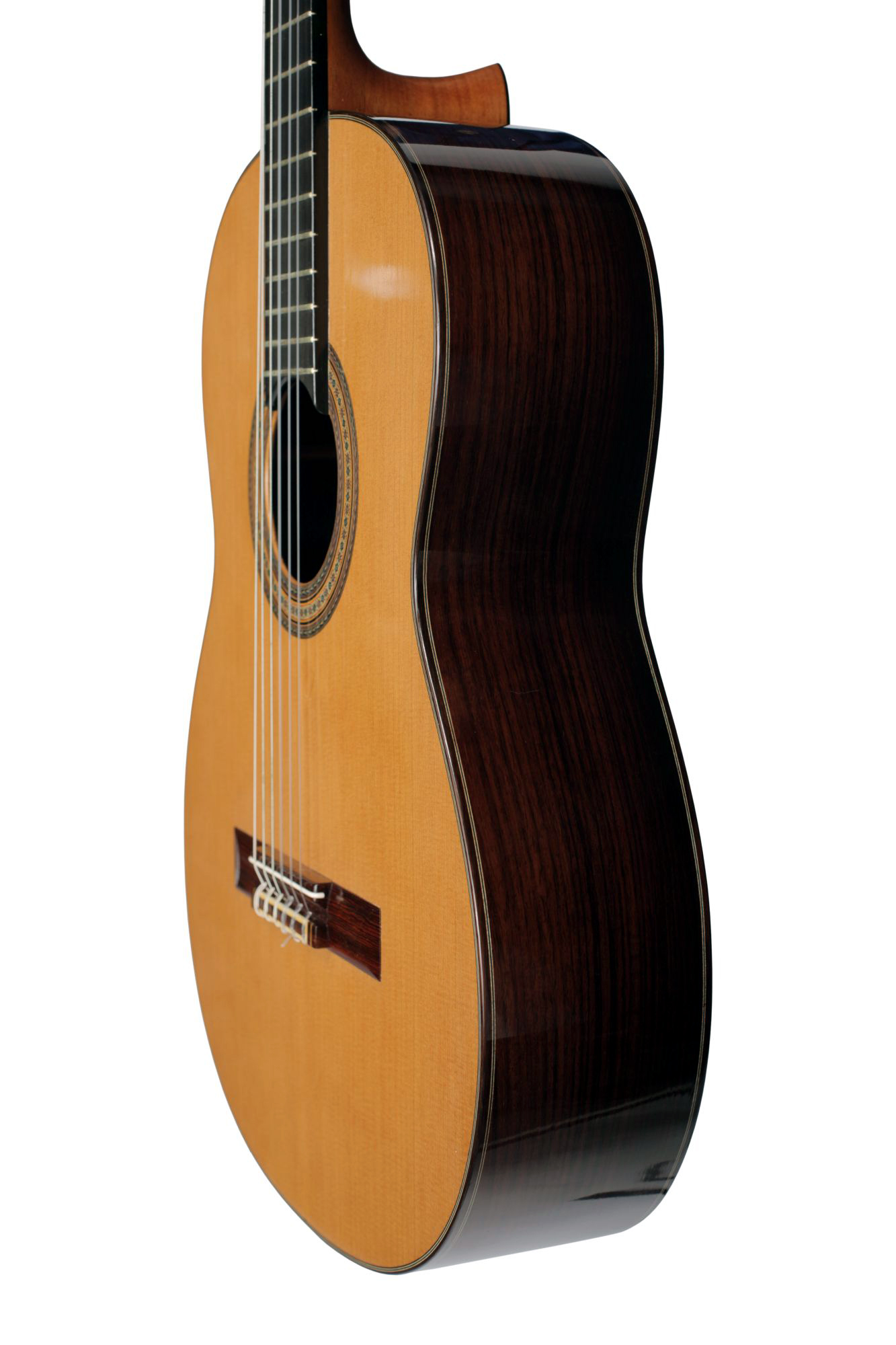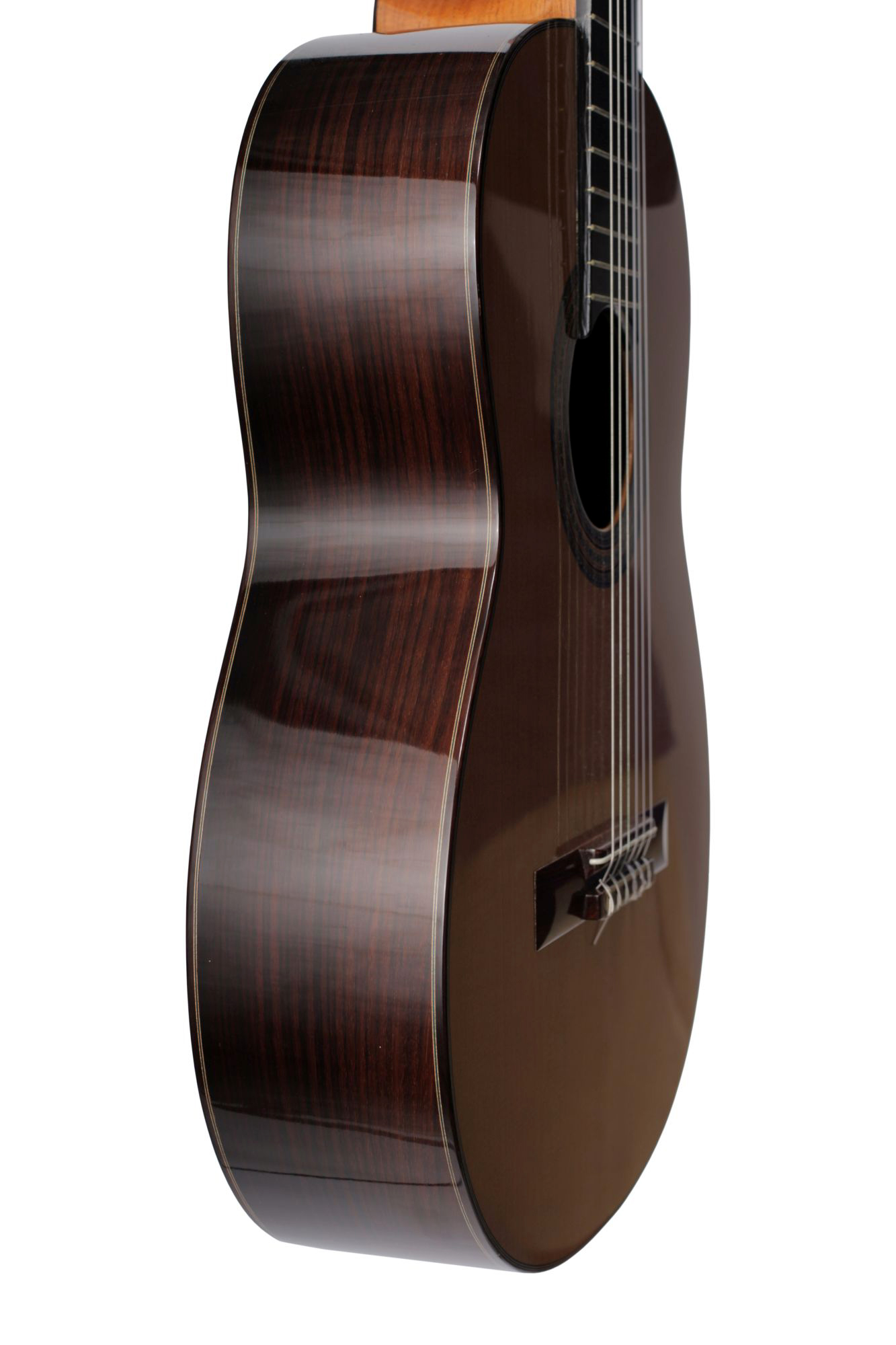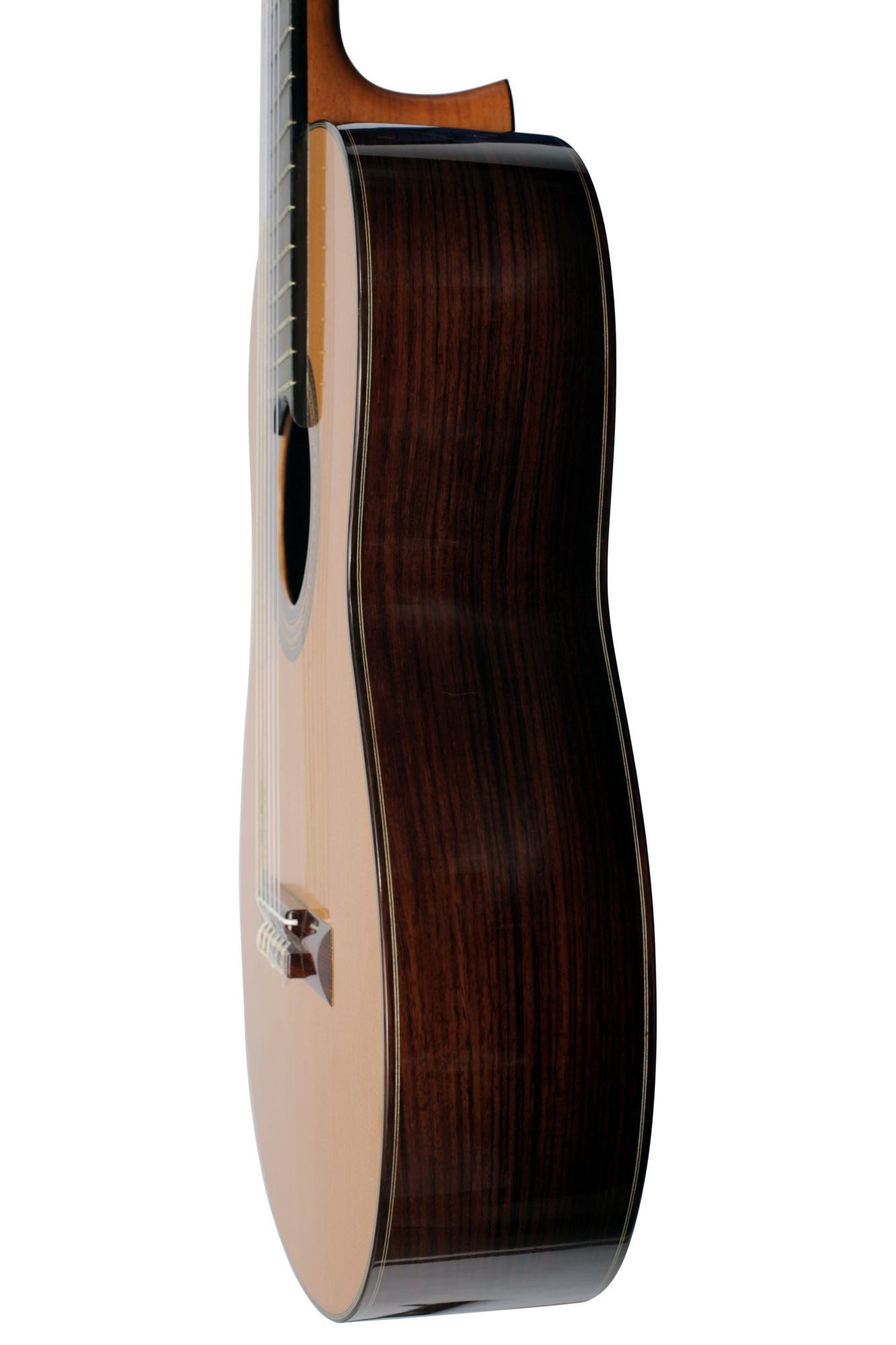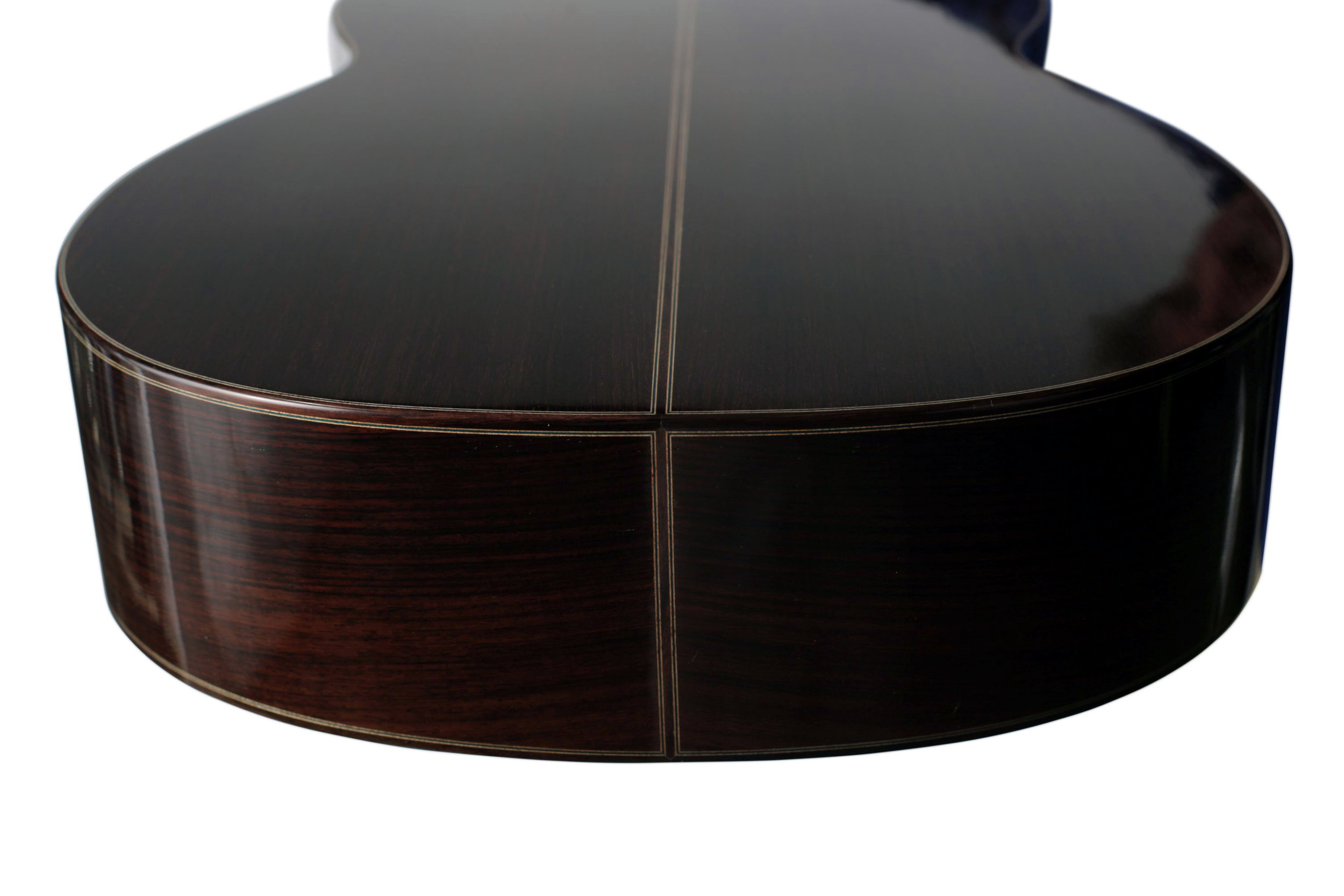Juan Alexander Grupalli - Concert Spruce - Classical Guitar
=> please CLICK HERE to see this guitar in action:
Juan Alexander Grupalli - His work in his own words
Started making guitars in 1995 with Joaquin García in Spain.
Joaquin is my stepfather. He taught me how to build his model of guitar that has a very traditional construction. Everything is made from scratch using selected woods that have been drying for decades. The glue I use is hot glue (hide glue)
For the varnish, only shellac diluted in pure alcohol and a tiny bit of linseed oil is used to apply very thin layers of varnish to the surfaces of the guitar. This kind of varnish is known as French polish and is known to help project sound.
The neck of the guitar is attached to the sides using two wooden wedges inside the guitar that lock the parts together. This technique is also used by other guitarmakers such as José Romanillos.
The rosettes of my guitars are designed and made by myself using very thin pieces of wood inlaid around the sound hole.
I have made many guitars out of European spruce (for the soundboard) and prefer this material as it has been used for musical instruments (such as pianos, violins and guitars) for centuries and has proven its longevity. I have also made guitars with Western red cedar soundboards with good success. The spruce I use is always European rather than Engleman spruce or Douglas spruce (From North America) The cedar sounboards come from North America.
When I make a guitar, I select the wood myself and shape it according to the sound it makes when I tap it with my fingers. Once the guitar is made I play it for some time and if necessary I will tune the top or the back to a lower tone by removing some shavings of wood from some of the internal struts.
I believe that the design of the modern classical guitar has reached its maximum perfection with the work of such makers as Torres, Hauser, Fleta and many others. I enjoy building guitars inspired in the designs of such masters.
I do not believe that it is necessary to add a device to amplify the sound of the classical guitar into the instrument itself as this seems to be in detriment of the quality of the sound. The guitar might sound louder but not as nice. By using good quality microphones placed away from the guitar and good quality equipment the sound can be amplified if necessary (to play with an orchestra for example)
I have studied guitar making with several makers: Joaquin García (Spain), Stephen Hill (UK), Fernando Silva (Argentina), James Lister (UK), Andrew Armstrong (Australia)
Price on Application
=> please CLICK HERE to see this guitar in action:
Juan Alexander Grupalli - His work in his own words
Started making guitars in 1995 with Joaquin García in Spain.
Joaquin is my stepfather. He taught me how to build his model of guitar that has a very traditional construction. Everything is made from scratch using selected woods that have been drying for decades. The glue I use is hot glue (hide glue)
For the varnish, only shellac diluted in pure alcohol and a tiny bit of linseed oil is used to apply very thin layers of varnish to the surfaces of the guitar. This kind of varnish is known as French polish and is known to help project sound.
The neck of the guitar is attached to the sides using two wooden wedges inside the guitar that lock the parts together. This technique is also used by other guitarmakers such as José Romanillos.
The rosettes of my guitars are designed and made by myself using very thin pieces of wood inlaid around the sound hole.
I have made many guitars out of European spruce (for the soundboard) and prefer this material as it has been used for musical instruments (such as pianos, violins and guitars) for centuries and has proven its longevity. I have also made guitars with Western red cedar soundboards with good success. The spruce I use is always European rather than Engleman spruce or Douglas spruce (From North America) The cedar sounboards come from North America.
When I make a guitar, I select the wood myself and shape it according to the sound it makes when I tap it with my fingers. Once the guitar is made I play it for some time and if necessary I will tune the top or the back to a lower tone by removing some shavings of wood from some of the internal struts.
I believe that the design of the modern classical guitar has reached its maximum perfection with the work of such makers as Torres, Hauser, Fleta and many others. I enjoy building guitars inspired in the designs of such masters.
I do not believe that it is necessary to add a device to amplify the sound of the classical guitar into the instrument itself as this seems to be in detriment of the quality of the sound. The guitar might sound louder but not as nice. By using good quality microphones placed away from the guitar and good quality equipment the sound can be amplified if necessary (to play with an orchestra for example)
I have studied guitar making with several makers: Joaquin García (Spain), Stephen Hill (UK), Fernando Silva (Argentina), James Lister (UK), Andrew Armstrong (Australia)
Price on Application
=> please CLICK HERE to see this guitar in action:
Juan Alexander Grupalli - His work in his own words
Started making guitars in 1995 with Joaquin García in Spain.
Joaquin is my stepfather. He taught me how to build his model of guitar that has a very traditional construction. Everything is made from scratch using selected woods that have been drying for decades. The glue I use is hot glue (hide glue)
For the varnish, only shellac diluted in pure alcohol and a tiny bit of linseed oil is used to apply very thin layers of varnish to the surfaces of the guitar. This kind of varnish is known as French polish and is known to help project sound.
The neck of the guitar is attached to the sides using two wooden wedges inside the guitar that lock the parts together. This technique is also used by other guitarmakers such as José Romanillos.
The rosettes of my guitars are designed and made by myself using very thin pieces of wood inlaid around the sound hole.
I have made many guitars out of European spruce (for the soundboard) and prefer this material as it has been used for musical instruments (such as pianos, violins and guitars) for centuries and has proven its longevity. I have also made guitars with Western red cedar soundboards with good success. The spruce I use is always European rather than Engleman spruce or Douglas spruce (From North America) The cedar sounboards come from North America.
When I make a guitar, I select the wood myself and shape it according to the sound it makes when I tap it with my fingers. Once the guitar is made I play it for some time and if necessary I will tune the top or the back to a lower tone by removing some shavings of wood from some of the internal struts.
I believe that the design of the modern classical guitar has reached its maximum perfection with the work of such makers as Torres, Hauser, Fleta and many others. I enjoy building guitars inspired in the designs of such masters.
I do not believe that it is necessary to add a device to amplify the sound of the classical guitar into the instrument itself as this seems to be in detriment of the quality of the sound. The guitar might sound louder but not as nice. By using good quality microphones placed away from the guitar and good quality equipment the sound can be amplified if necessary (to play with an orchestra for example)
I have studied guitar making with several makers: Joaquin García (Spain), Stephen Hill (UK), Fernando Silva (Argentina), James Lister (UK), Andrew Armstrong (Australia)
Price on Application
See this guitar in action
Guitar: Juan Alexander Grupalli, Spruce Top
Composition: Allemande by David Reynolds
Performed by: Daniel Nistico














